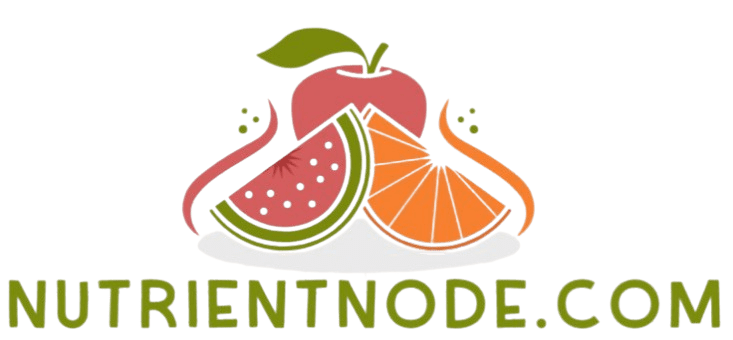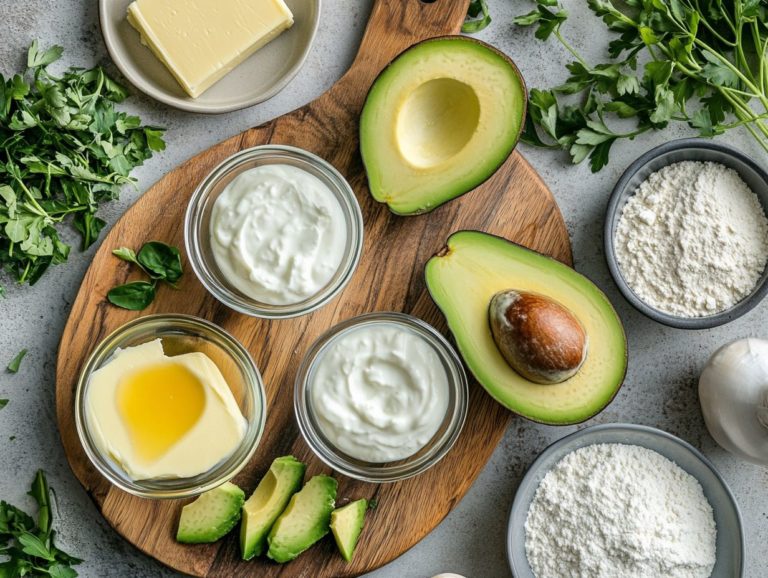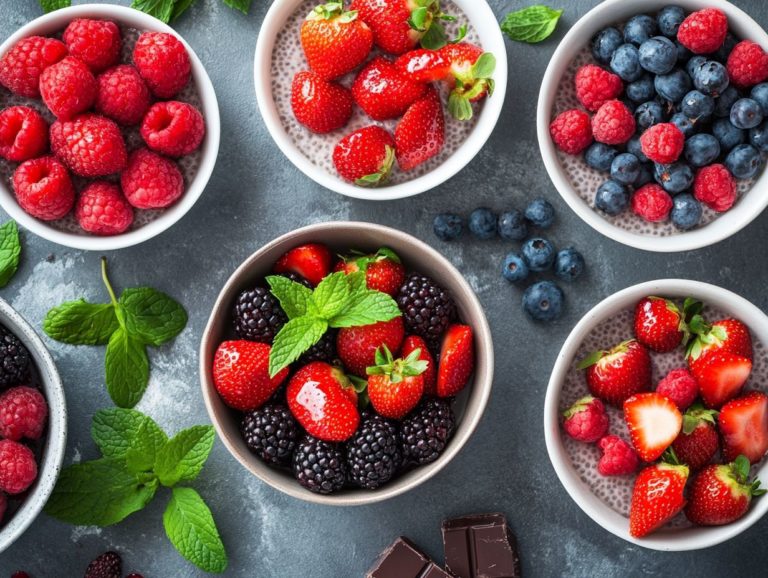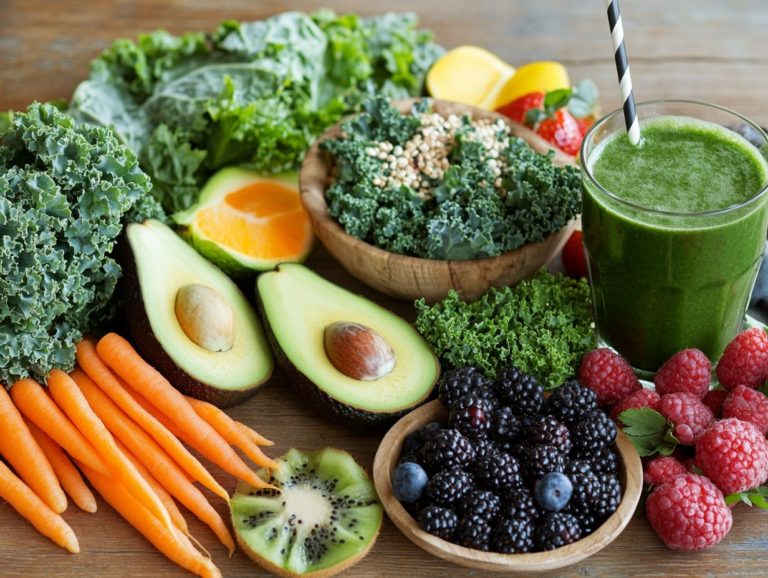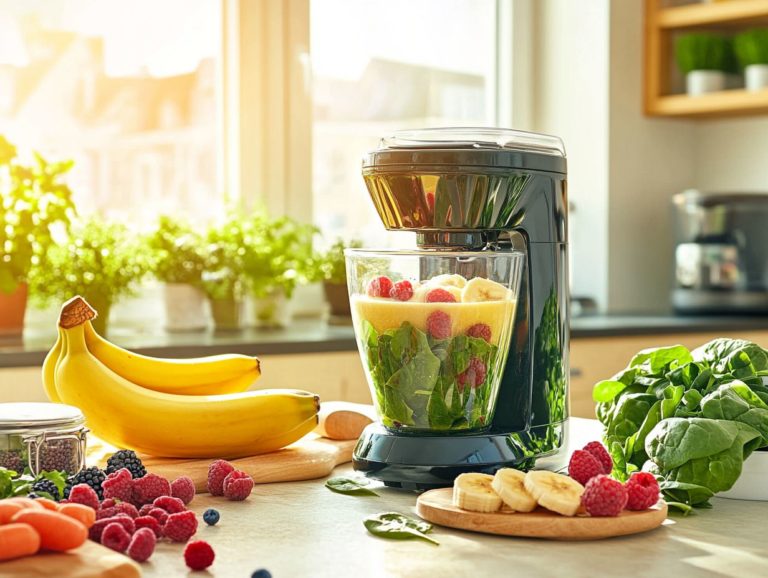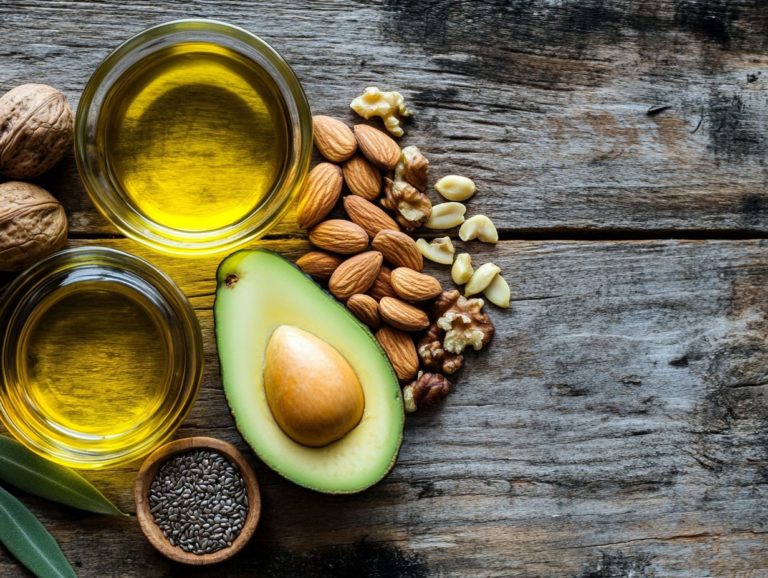5 Easy Ways to Increase Your Fiber Intake
Are you eager to enhance your health through simple dietary changes? Start today to feel the benefits of fiber in your life! Increasing your fiber intake can truly transform your overall wellness.
You will also learn why fiber is essential, the recommended daily intake, and how to seamlessly weave more fiber into your meals. Get ready to discover how these simple changes can lead to a healthier, happier you!
Contents
- Key Takeaways:
- 1. Add More Fruits and Vegetables to Your Diet
- 2. Choose Whole Grain Options
- 3. Incorporate Beans and Legumes
- 4. Snack on Nuts and Seeds
- 5. Try Fiber Supplements
- Why Is Fiber Important for Our Health?
- What Are the Different Types of Fiber?
- What Are the Benefits of a High-Fiber Diet?
- What Are the Risks of Not Getting Enough Fiber?
- How Can One Incorporate More Fiber Into Their Diet?
- Frequently Asked Questions
- How can I easily increase my fiber intake?
- What are some high-fiber foods I should include in my diet?
- How much fiber should I aim to consume each day?
- What are the health benefits of increasing my fiber intake?
- Are there any potential downsides to increasing my fiber intake?
- How can I make sure I’m getting enough fiber every day?
Key Takeaways:
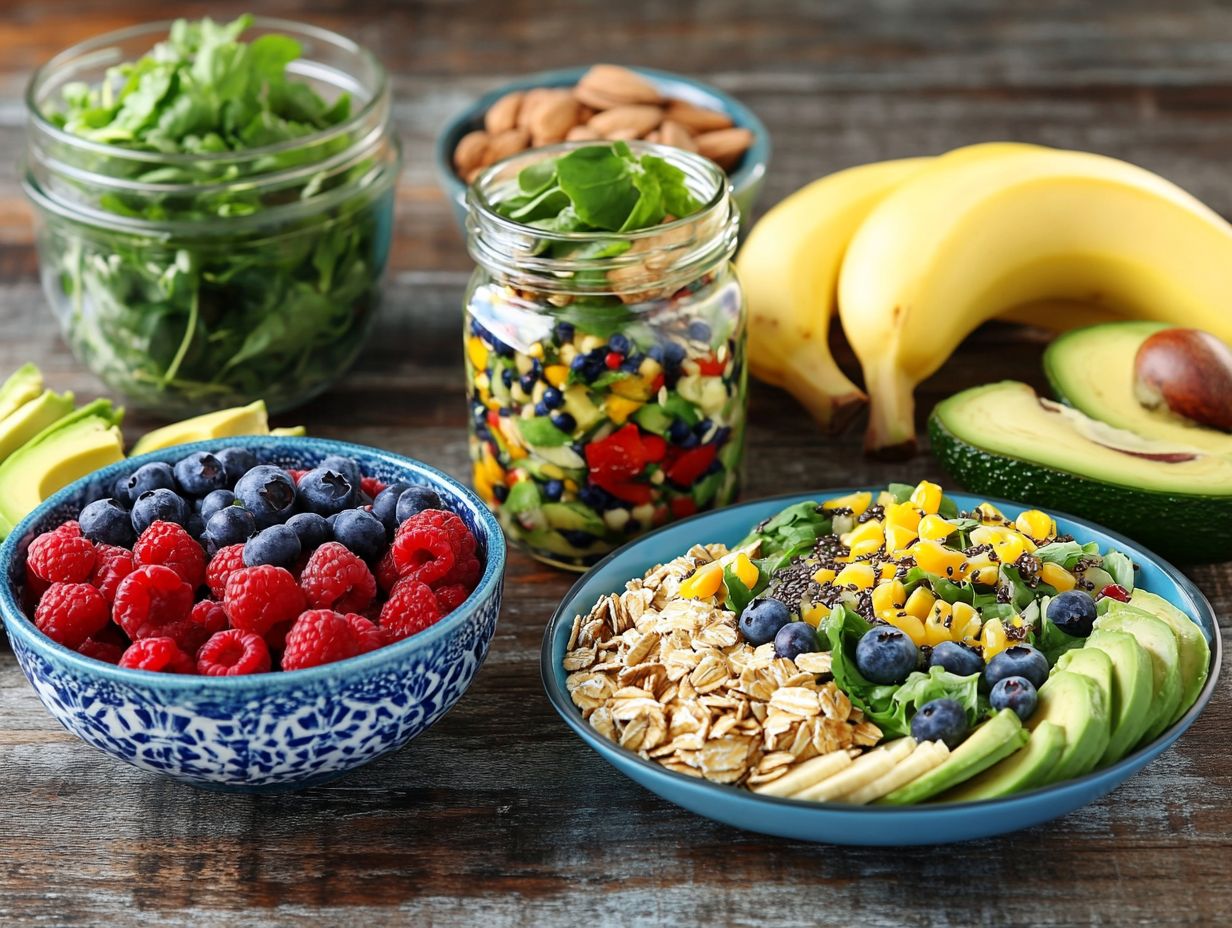
- Incorporate more fruits and vegetables into your meals to increase your fiber intake.
- Opt for whole grain options like brown rice and whole wheat bread over refined grains.
- Include beans and legumes in your diet to add a significant amount of fiber.
1. Add More Fruits and Vegetables to Your Diet
Incorporating more fruits and vegetables into your diet can significantly improve your overall health. They provide essential nutrients and dietary fiber, vital for maintaining optimal gut health and preventing chronic diseases, as emphasized by nutrition experts from prestigious institutions like Stanford University.
Among the best options, berries such as raspberries and blackberries really stand out for their high fiber content and antioxidant properties. They are perfect for adding a special touch to your smoothies or yogurt bowls.
Leafy greens like spinach and kale are not only rich in fiber but their versatility makes them ideal for salads, soups, and even smoothies.
Legumes, including lentils and chickpeas, are fantastic sources of fiber too. They adapt beautifully to hearty stews or serve as a base for nutritious hummus.
Don t underestimate roasted sweet potatoes; they are packed with vitamins and fiber, making them a delicious side dish or comforting mashed alternative.
By creatively incorporating these options, you can easily enjoy a healthy and satisfying diet that promotes your well-being.
2. Choose Whole Grain Options
Choosing whole grain options for your daily meals can significantly elevate your fiber intake while unlocking a wide range of health benefits, from improved digestion to a lower risk of heart disease.
Incorporating whole grains like oats and whole grain breakfast cereals into your diet is a simple yet effective way to enhance your nutrition.
For breakfast, imagine savoring a hearty bowl of oatmeal adorned with fresh fruits and nuts, or enjoying whole grain cereals paired with a splash of milk and a handful of berries.
When those snacking hours roll around, opt for whole grain crackers or popcorn; they provide a delightful crunch while staving off hunger.
You might also consider stirring some whole grain flour into your smoothies or using it in your baking adventures. This not only boosts your fiber intake but also enriches your meals, making them both wholesome and flavorful.
3. Incorporate Beans and Legumes
Incorporating beans and legumes into your diet is a superb strategy to boost your fiber intake while reaping a multitude of health benefits, as highlighted by experts like Justin Sonnenburg from the University of Illinois.
These nutrient-rich foods come in various forms think black beans, chickpeas, lentils, and kidney beans each boasting unique nutrients brimming with protein, vitamins, and minerals. For example, lentils deliver an impressive dose of folate, while chickpeas shine with their high iron content.
Integrating these legumes into your meals is effortless. Consider:
- Sprinkling lentils into salads.
- Blending chickpeas into creamy hummus.
- Tossing black beans into tacos.
Not only do they elevate the flavor and texture of your dishes, but they also provide a hearty, plant-based protein source, making them a staple for anyone committed to a health-conscious lifestyle.
4. Snack on Nuts and Seeds
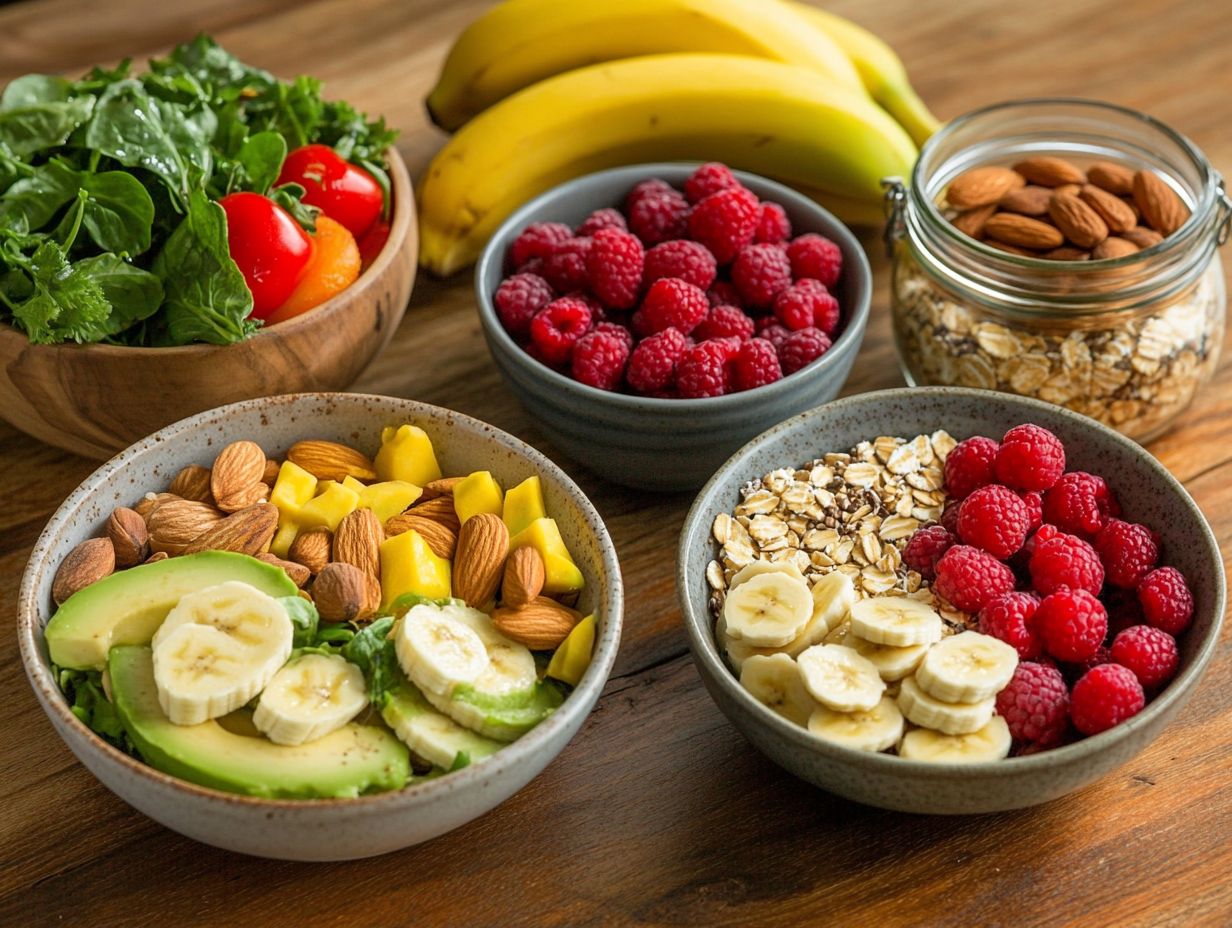
Snacking on nuts and seeds is a satisfying and nutritious way to elevate your fiber intake. These snacks also provide healthy fats and proteins that support a well-rounded diet.
Incorporating options like chia seeds, almonds, and flaxseeds can significantly enhance your dietary fiber levels. This promotes digestive health and helps you feel full for longer.
Chia seeds deliver a fiber boost and provide omega-3 fatty acids, which are excellent for heart health.
Get creative with your snacks! Try whipping up a chia pudding by soaking the seeds in almond milk and topping it with fresh berries. You could also blend a delicious almond butter smoothie that will leave your taste buds dancing.
Roasted pumpkin seeds sprinkled on a salad add delightful crunch and enhance the nutrient profile. Healthy eating can be both enjoyable and delectable.
5. Try Fiber Supplements
If you find it challenging to meet your daily fiber intake through food alone, fiber supplements can be a convenient alternative. They offer a boost to your gut health and overall well-being.
These supplements come in various forms, such as psyllium husk, inulin, and wheat dextrin, each with unique benefits.
Psyllium husk is well-known for supporting regular bowel movements and potentially lowering cholesterol levels. Inulin is a type of fiber that helps good bacteria grow, enhancing your digestive health.
While these products can help increase your daily fiber intake, it’s wise to balance their use with whole food sources. Incorporate fruits high in fiber, vegetables, and whole grains to maximize nutrient absorption and ensure you receive essential vitamins and minerals.
Why Is Fiber Important for Our Health?
Fiber is an essential component of a healthy diet. It plays a crucial role in maintaining gut health and regulating cholesterol levels. Research from nutrition experts, like Trista Best, supports these health benefits.
Fiber also promotes regular bowel movements and aids digestion. It significantly contributes to weight management by adding bulk to your meals without extra calories, creating a satisfying sense of fullness.
Moreover, fiber plays a vital role in disease prevention. It helps reduce the risk of conditions such as heart disease and type 2 diabetes. To assess your fiber intake, track your consumption of fibrous foods and compare it to the recommended daily values typically around 25 grams for women and 38 grams for men.
By incorporating a diverse array of sources, like fruits, vegetables, whole grains, and legumes, you ensure not only adequate intake but also a rich variety of nutrients and benefits.
What Is the Recommended Daily Fiber Intake?
The recommended daily fiber intake varies based on age and gender. Generally, it suggests about 25 grams for women and 38 grams for men. Meeting these guidelines is crucial for overall health.
For those over 50, the recommendations shift slightly. Intake decreases to around 21 grams for women and 30 grams for men. Children and teenagers also need adequate fiber; guidelines suggest 19 grams for kids aged 1-3, escalating to 25-38 grams for older adolescents.
Keeping track of your fiber intake can provide valuable insights into your dietary habits. It helps ensure you adhere to these recommendations. Failing to meet these fiber targets can lead to health issues, including digestive disorders, elevated cholesterol levels, and an increased risk of chronic diseases.
This reinforces the importance of incorporating a fiber-rich diet into your daily routine. Don’t miss out on the benefits of fiber make your next meal fiber-rich and feel the difference!
What Are the Different Types of Fiber?
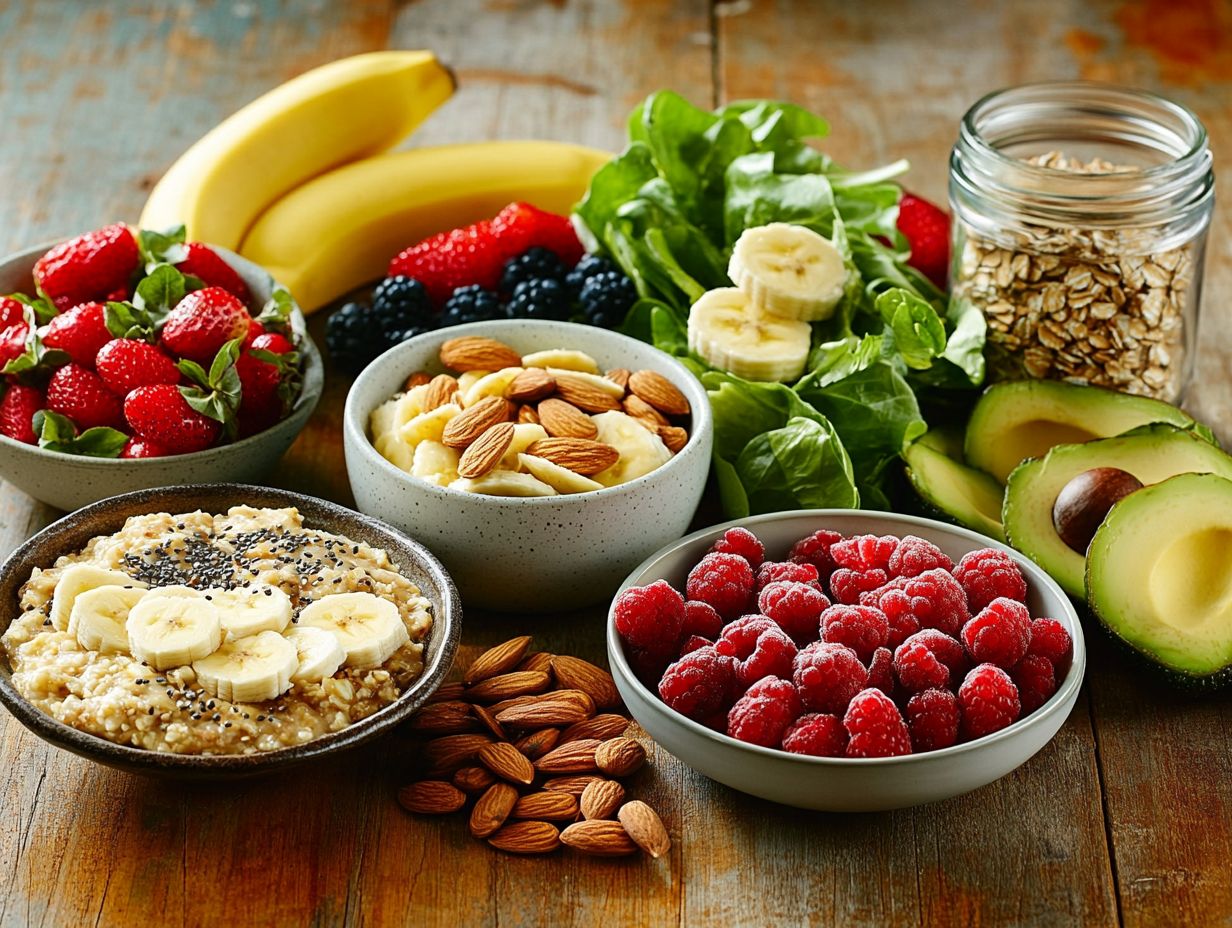
Fiber comes in two main varieties: soluble and insoluble. Each type has remarkable health benefits and nutritional perks that significantly contribute to your digestive health and overall well-being.
Soluble fiber dissolves in water, transforming into a gel-like substance. This can help lower your blood cholesterol levels and stabilize blood sugar.
You will find soluble fiber in delightful sources like:
- Oats
- Beans
- Lentils
- Apples
- Citrus fruits
In contrast, insoluble fiber remains steadfast and does not dissolve in water. Instead, it adds bulk to your stool, promoting regular bowel movements.
You can enhance your diet with foods rich in insoluble fiber such as:
- Whole grains
- Nuts
- Seeds
- The skins of fruits and vegetables
By adding both types of fiber to your diet, you can elevate your digestive health and foster a sense of fullness. This may also lower the risk of chronic diseases.
What Are the Benefits of a High-Fiber Diet?
A high-fiber diet offers a wealth of health benefits. It enhances gut health, improves digestion, and reduces the risk of chronic diseases, including diabetes and heart disease.
Research indicates that embracing a fiber-rich diet significantly lowers your risk of cardiovascular issues. A study published in the British Medical Journal reveals that for every 7 grams you increase your daily fiber intake, there is a 25% reduction in heart disease mortality.
Fiber also plays an important role in regulating blood sugar levels. This is especially advantageous for those managing diabetes, as a high-fiber diet can boost insulin sensitivity.
To elevate your fiber intake, consider incorporating:
- Whole grains
- Fruits
- Vegetables
- Legumes
- Nuts
You can make smart substitutions, such as swapping white rice for quinoa. This can lead to a remarkable transformation in your overall health!
What Are the Risks of Not Getting Enough Fiber?
Neglecting to consume enough dietary fiber can expose you to a range of health risks. These include digestive issues, obesity, and an elevated likelihood of developing chronic diseases.
When your fiber intake is low, you might deal with common digestive complaints like constipation and bloating. The stakes are higher for those who rely heavily on processed foods.
Low fiber intake has been associated with serious conditions such as type 2 diabetes and heart disease. To protect your health, it’s crucial to incorporate a diverse array of fiber-rich foods into your daily meals.
Gradually increasing your fiber intake can help your digestive system adjust. Remember to stay hydrated to support your gut health!
How Can One Incorporate More Fiber Into Their Diet?
Incorporating more fiber into your diet is easier than you might think. Simply add more fruits, vegetables, whole grains, legumes, and foods that are great sources of fiber to your daily meals.
By making these small yet impactful adjustments, you can enjoy a delightful variety of flavors and textures. For instance, consider swapping out white rice for quinoa or brown rice.
You might also enjoy starting your day with a fiber-rich smoothie made from spinach, avocado, and chia seeds. Remember, adding fiber should be a gradual process to prevent digestive discomfort.
A great first step could be as simple as enjoying an extra serving of fruit or tossing some lentils into a hearty soup. These little changes can set you on the path to a healthier digestive system.
Frequently Asked Questions
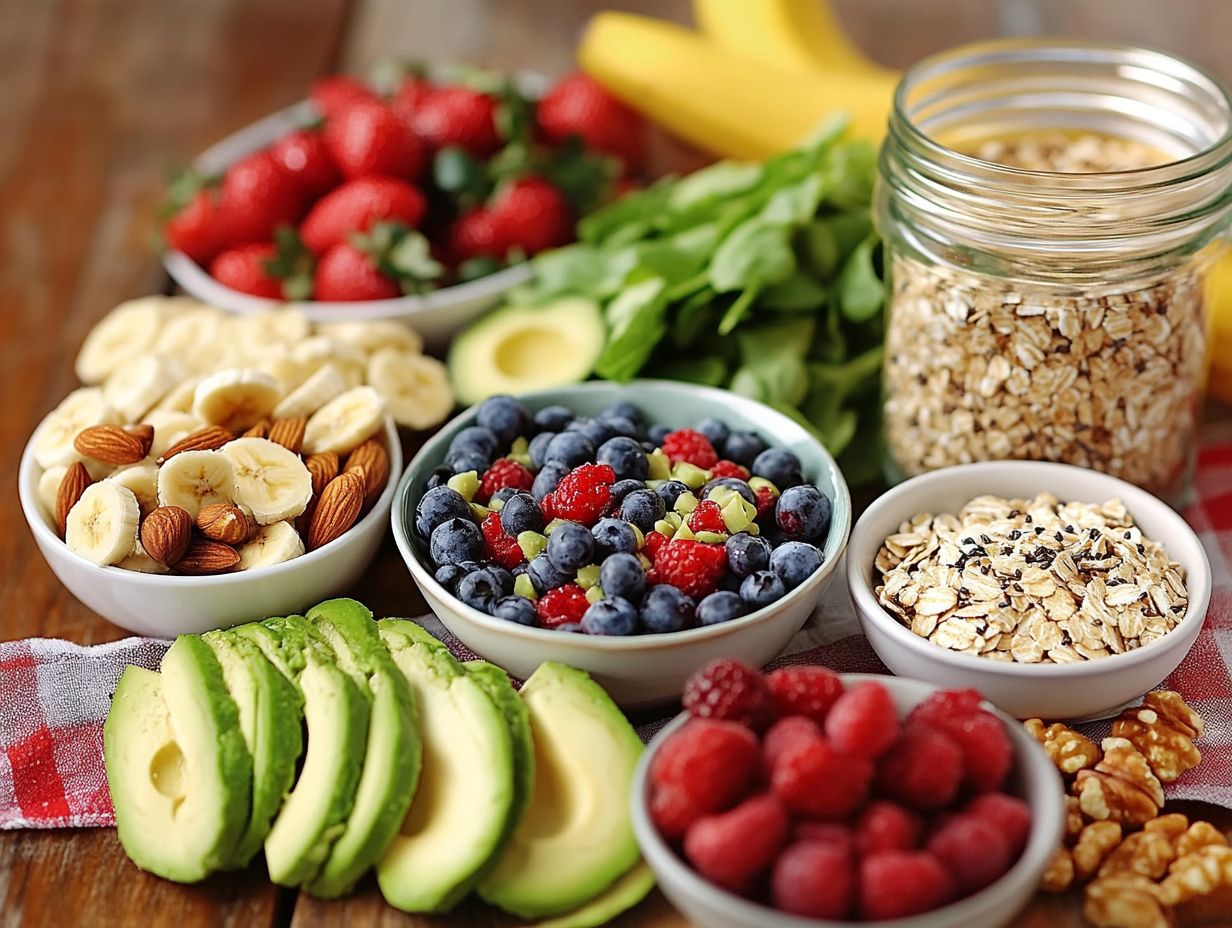
How can I easily increase my fiber intake?
Eating more fruits, veggies, and whole grains is a simple way to boost your fiber.
Snack on fiber-rich foods like nuts and seeds, and swap refined grains for whole ones.
What are some high-fiber foods I should include in my diet?
Boost your fiber with delicious options like berries, apples, avocados, beans, and lentils.
Don’t forget about broccoli and whole grains such as oats, quinoa, and brown rice!
How much fiber should I aim to consume each day?
The recommended daily intake is 25 grams for women and 38 grams for men.
However, some experts suggest aiming for 30-35 grams per day to maximize the health benefits of fiber.
What are the health benefits of increasing my fiber intake?
Increasing your fiber can promote digestive health and reduce the risk of chronic diseases like heart disease and diabetes.
It can also help with weight management. Who doesn t want that?
Are there any potential downsides to increasing my fiber intake?
While fiber is generally safe for most people, consuming too much too quickly can cause bloating, gas, and discomfort.
Start boosting your fiber intake today, but do it gradually to avoid discomfort!
How can I make sure I’m getting enough fiber every day?
You can track your fiber intake using a food diary or a nutrition tracking app.
Always check those food labels for fiber content!
